Bridging Cost and Care: Global Benchmarks For Healthcare Environments
Operational Effectiveness
Glazing has become a valuable building element indoors also, with increased application for partitions and interior windows. Improved transparency and interior visibility in healthcare settings is also linked to higher productivity and improved care, says Valerie Bevens, technical services manager with TIMELY Industries, a producer of prefinished door frames. "We have seen an increase in the use of sidelights, borrowed lights and transom frames, many requiring fire ratings," she explains. "Design professionals can easily manipulate door frames by adding larger glass areas or by including glazed openings to increase the transfer of light and radiant energy throughout interior spaces."
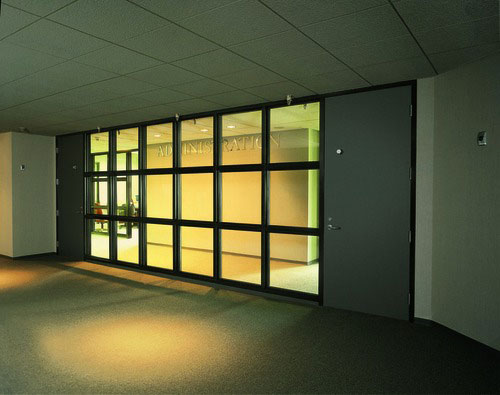 |
Greater need for accessibility and transparency within healthcare environments has led to new, barrier-free openings with doorframes that have built-in glass sidelites and transoms. Specialized hardware needs have also called for pneumatic controls and electronic access systems. Photo courtesy of TIMELY Industries |
Bevens adds that door designs are changing to allow for barrier-free travel paths with fewer encumbrances. Pneumatic controls and electronic access hardware are commonly integrated into hospital doors.
Interior assemblies of all kinds have evolved to meet the special operational and economic challenges associated with healthcare interiors. "Healthcare organizations demand easy-maintenance facilities, in part to reduce infections and in part to reduce overhead costs," says Lee Hedberg, director of engineering with Engineered Lighting Products, "There are new cove lighting fixtures, for example, that are integral to the wall surface so there are no edges to clean, no debris getting caught in the fixtures."
These fixture types also work well in corridors, where engineers tend to gang HVAC ducts and lines for water, vacuum, air and gas lines, which can't be routed through patient zones. To allow access and clearances, architects face significant restrictions on lighting, wall rails and other wall- or ceiling-mounted accessories, says Hedberg.
Interior Hygiene and Abuse-Resistance
Another public health consideration in hospitals areas with high levels of visitor and public traffic is reducing opportunities for bacterial growth and other sources of nosocomial infections, those that patients are exposed to in healthcare environments. According to CDC, nosocomial infection rates have remained stable over the past 25 years, at about five to six hospital-acquired infections per 100 admissions. However, because of shorter inpatient stays, the rate has actually increased 36 percent over the last 20 years, at a total cost of $4.5 billion and at least 88,000 deaths.
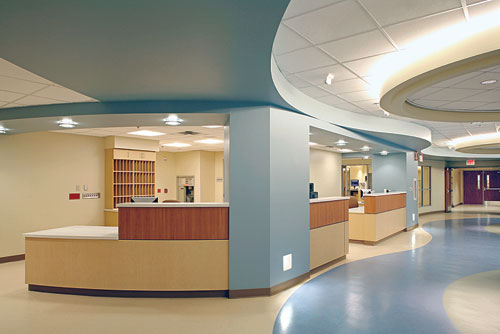 |
For the Beaman Neonatal Intensive Care Unit at Baptist Hospital, Nashville, cove lighting fixtures shield patients from glare while also easing maintenance needs, because they are built into the walls leaving no slit openings to clean. Photo courtesy of ELP |
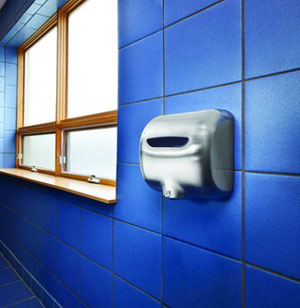 |
More hospitals are using electric hand dryers in public washrooms and preoperative zones due to hygiene and maintenance concerns. Photo courtesy of Excel Dryer, Inc. |
Awareness among providers and the general public has also increased, bringing attention on indoor maintenance practices and clinical protocols to reduce the spread of viruses and bacteria. While architects play a limited role in this effort, attention to public washrooms has helped, says William Gagnon, vice president of marketing and key accounts with Excel Dryer, Inc. "Architects and facility managers are looking to remove areas where bacteria and viruses can live and grow. For example, used bacteria laden paper towel waste in trash cans or on floors creates a cool, moist environment which can be a breeding ground for bacteria. Many hospitals have opted for the newer fast efficient hand dryers that are hot and dry rather than paper products to create a more hygienic restroom environment," he explains. "This eliminates at least one of the environments where MRSAs-the so-called super-bugs-can survive and multiply."
Gagnon adds that the new age of high speed hand dryers utilize a high-velocity, heated air stream that removes the residual moisture layer on the skin more completely than paper or cloth towels due to evaporation from the heat. Other best-practice washroom specs include hands-free, high efficiency fixtures such as soap dispensers, low-flow faucets, urinal and toilets.
Notice
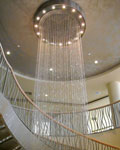
www.bluworldusa.com
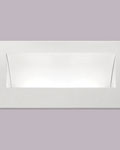

www.exceldryer.com
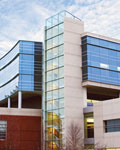
www.guardian.com
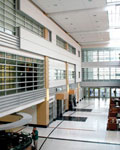
www.safti.com
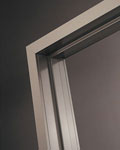
www.timelyframes.com









